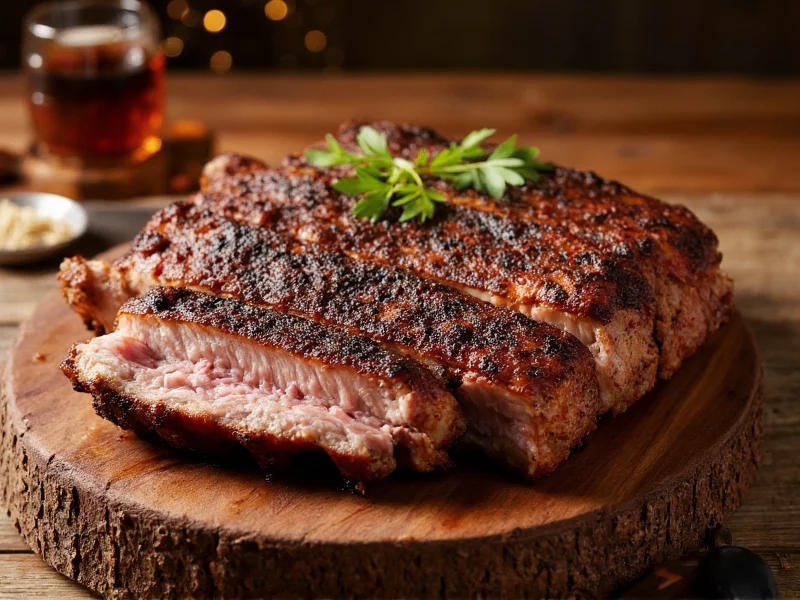When shopping for or ordering short ribs, it's important to understand they're exclusively a beef cut. This distinction matters for dietary preferences, religious restrictions, and cooking methods. Many people confuse short ribs with pork ribs due to similar preparation styles and menu listings.
Understanding Short Ribs: A Beef Cut Explained
Short ribs originate from the plate section of the beef carcass, located in the lower front belly area just below the rib primal. Butchers cut these ribs across the bone, creating the characteristic "short" appearance that gives them their name. Unlike pork ribs which come from the rib cage area, beef short ribs include both meat and bone from this specific section.
The confusion between beef and pork ribs often stems from restaurants and grocery stores that don't always specify the animal source. When you see "short ribs" on a menu without specification, it's almost always referring to the beef variety. True pork ribs are marketed as spare ribs, baby back ribs, or St. Louis style ribs.
Beef Ribs vs. Pork Ribs: Key Differences
| Characteristic | Beef Short Ribs | Pork Ribs |
|---|---|---|
| Animal Source | Cow (beef cattle) | Pig |
| Common Names | Short ribs, plate ribs | Spare ribs, baby back ribs |
| Bone Structure | Thicker, denser bones | Thinner, more flexible bones |
| Meat Texture | Richer, more marbled, requires longer cooking | Leaner, cooks faster |
| Flavor Profile | Bolder beef flavor | Milder pork flavor |
Why the Confusion Between Beef and Pork Ribs?
The misunderstanding about whether short ribs are pork often occurs for several reasons:
- Similar cooking methods - Both beef short ribs and pork ribs are often prepared using similar techniques like braising, smoking, or grilling
- Vague menu descriptions - Restaurants sometimes simply list "ribs" without specifying the meat type
- Regional terminology differences - Some areas might use different naming conventions
- Visual similarity - When cooked and plated, both can appear quite similar to inexperienced diners
How to Identify Short Ribs When Shopping or Dining
When purchasing or ordering, look for these indicators to confirm you're getting beef short ribs rather than pork:
- Check the label - Properly labeled packages will specify "beef short ribs"
- Examine the bone structure - Beef short ribs have thicker, heavier bones compared to pork ribs
- Ask the butcher or server - Don't hesitate to request clarification about the meat source
- Consider the price point - Beef short ribs typically cost more than pork ribs
- Look at the meat marbling - Beef short ribs show more prominent marbling than pork ribs
Cooking Considerations for Beef Short Ribs
Understanding that short ribs are beef, not pork, significantly impacts cooking approaches. Beef short ribs require different preparation than pork ribs due to their denser muscle structure and higher collagen content:
- Longer cooking times - Beef short ribs typically need 2.5-4 hours of slow cooking to become tender
- Higher fat content - The rich marbling requires careful rendering during cooking
- Different seasoning profiles - Beef stands up to bolder spices than pork
- Braising liquid considerations - Beef pairs well with red wine, tomatoes, and robust herbs
- Temperature requirements - Beef short ribs should reach 200-205°F internal temperature for optimal tenderness
Confusing beef short ribs with pork ribs could lead to improperly cooked meals, as pork ribs generally cook faster and to lower internal temperatures (190-195°F). This distinction is particularly important for those following specific dietary guidelines that differentiate between pork and beef consumption.
Global Variations of Short Ribs
While short ribs are universally recognized as a beef cut, preparation methods vary significantly across cultures:
- Korean galbi - Thinly sliced beef short ribs marinated in sweet soy-based sauce
- Brazilian costela - Whole beef short ribs slow-cooked over open flame
- Argentinian vacío - Beef short ribs cooked on a parilla grill
- American barbecue style - Often smoked and served with regional sauces
These international preparations all use the same fundamental cut—beef short ribs—demonstrating the global recognition of this particular beef section regardless of regional cooking styles.











 浙公网安备
33010002000092号
浙公网安备
33010002000092号 浙B2-20120091-4
浙B2-20120091-4